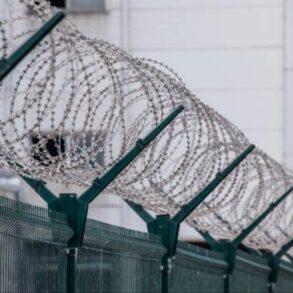
The amount of potentially crumbling concrete used in prisons will not be known for at least two months as surveys have yet to be done, the prison officers’ union has said, expressing alarm at the slow timetable.
The prisons service for England and Wales told the Prison Officers’ Association (POA) that it did not believe reinforced autoclaved aerated concrete (Raac) existed in accommodation buildings, something the union said appeared to be “wishful thinking”.
“It felt like a guess,” Joe Simpson, the POA’s deputy general secretary told the Guardian after a meeting on Thursday with HM Prison Service and Probation Service (HMPPS).
“The full surveys to find out where Raac is are yet to start, so they don’t have a clue where it is,” he said. “They told us they think none is in prison accommodation, but given the shortage of prison space, that felt like wishful thinking.”
Such is the lack of prison capacity that even one prison wing being taken out of use due to Raac could use up every spare place.
After two letters from the POA to HMPPS in July and this month to seek information on the possible presence of Raac in prisons, HMPPS held what it termed a “holding meeting” to tell the union that “intrusive” investigations to find the material would begin in the next two weeks.
A full picture would not be completed for around two months, Simpson said, adding that he was sceptical the service would be able to find enough surveyors or other experts to meet even this timetable.
“They sat there and basically blustered,” he said. “It would have been better if they’d just told us, ‘We don’t know’.”
Simpson pointed to comments this week in the journal Building by Peter Caplehorn, chief executive of the Construction Products Association, who said that while he did not expect Raac to be used widely in post-WW2 housing, it was much more likely to be used in universities and prisons.
According to Simpson, the POA was told in the meeting that HMPPS had no record of what materials were used to build prisons, or to construct new parts of older jails.
Raac, a lighter and cheaper form of concrete which is aerated with bubbles rather than filled with aggregate like gravel, was widely used from the 1950s onwards, often for roofs. It has a theoretical maximum life of 30 years, although this can be much longer if the structure is not weakened by water ingress.
While the worries over Raac have existed for some years, the current alert, initially focused on schools, came after three sudden failures of the material in buildings over the summer, reported to the Department for Education.
This post was originally published on this site be sure to check out more of their content.









